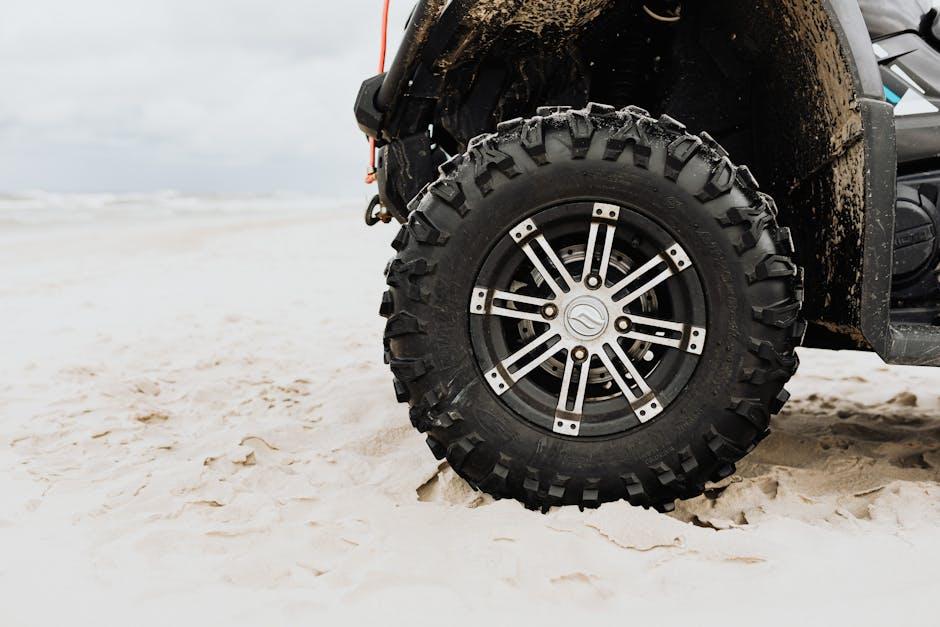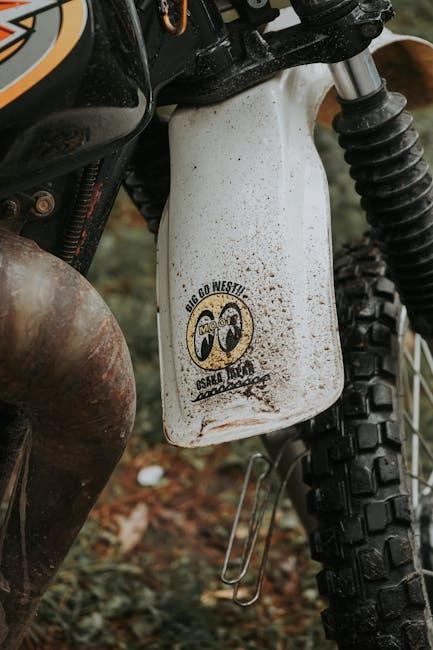Imagine gliding smoothly over the road, where every bump, turn, and stretch feels less like a challenge and more like a seamless dance between you and your vehicle. Whether you’re commuting through bustling city streets or embarking on a weekend getaway along winding country roads, ride comfort and stability are key to transforming any journey into a pleasurable experience. In this article, we’ll explore practical ways to enhance your vehicle’s ability to absorb shocks, maintain control, and offer that elusive feeling of tranquility behind the wheel. From suspension tweaks to tire choices, understanding these factors can turn your drive from merely functional to genuinely enjoyable.
Table of Contents
- Understanding the Role of Suspension Systems in Ride Quality
- Choosing the Right Tires for Enhanced Traction and Comfort
- Optimizing Air Pressure for Balanced Performance and Stability
- The Impact of Weight Distribution on Vehicle Handling
- Upgrading Shock Absorbers to Reduce Vibration and Improve Control
- Routine Maintenance Tips to Sustain Smooth and Stable Rides
- Q&A
- Insights and Conclusions

Understanding the Role of Suspension Systems in Ride Quality
Suspension systems are the unsung heroes behind a smooth, controlled driving experience. They act as a buffer, absorbing shocks from uneven road surfaces and maintaining tire contact with the ground. This dynamic interaction not only cushions passengers but also stabilizes the vehicle during turns, stops, and accelerations. The key components, such as springs, shock absorbers, and control arms, work in harmony to minimize vibrations and jarring impacts. Understanding this synergy is essential for anyone looking to enhance both comfort and vehicle handling.
Optimizing suspension performance involves more than just upgrading parts; it requires a balance of flexibility and firmness. Adjusting suspension stiffness can tailor ride quality to specific conditions—softer settings for comfort on city streets, firmer for stability on highways. Here’s a quick overview of how different suspension elements influence your driving experience:
- Springs: Support the vehicle’s weight and absorb bounces.
- Shock absorbers: Control spring motion to prevent excessive bouncing.
- Anti-roll bars: Reduce body roll during cornering for improved stability.
| Component | Function | Effect on Ride |
|---|---|---|
| Coil Springs | Supports weight, absorbs bumps | Comfortable cushioning |
| Shock Absorbers | Dampens spring oscillations | Controls sway and bounce |
| Anti-roll Bars | Reduces body roll | Improved cornering stability |

Choosing the Right Tires for Enhanced Traction and Comfort
When selecting tires, consider the specific driving conditions you frequently encounter. Tires designed with advanced tread patterns, such as those featuring deeper grooves and multiple sipes, significantly boost traction on wet and slippery roads. Additionally, choosing the appropriate tire compound plays a crucial role; softer compounds offer better grip but wear faster, while harder compounds provide longer durability at the expense of traction. Balancing these factors allows you to tailor your choice toward either maximum safety or extended performance.
For optimum ride comfort, tire size and construction matter just as much as tread design. Larger tires with flexible sidewalls absorb shocks better, smoothing out bumps and road imperfections. Here is a quick comparison of tire types that balance traction and comfort effectively:
| Type | Traction Level | Comfort Rating | Best Use |
|---|---|---|---|
| All-Season | Good | High | Daily driving, mild weather |
| Performance | Very High | Moderate | Sporty driving, dry roads |
| Touring | Good | Very High | Long-distance cruising, comfort |
Keep these tips in mind for enhanced tire selection:
- Match tires to your typical driving environment and climate.
- Consider load capacity and speed ratings for safety.
- Look for tires with noise-reducing technologies for quieter rides.
- Check reviews and manufacturer specs to find the ideal balance.

Optimizing Air Pressure for Balanced Performance and Stability
Achieving the perfect air pressure in your tires is a subtle art that dramatically influences your ride experience. Too much pressure results in a harsh ride and reduced traction, while too little pressure can cause sluggish handling and increased tire wear. Balancing pressure is key to merging performance with comfort. Start by consulting your vehicle’s manual or tire placard for manufacturer recommendations, then adjust based on specific conditions such as load, speed, and terrain. Regularly checking and fine-tuning tire pressure ensures that your ride remains both smooth and stable, minimizing vibrations and enhancing control during sharp turns or sudden stops.
Consider the following tips when adjusting tire pressure:
- Account for temperature: Tire pressure fluctuates with temperature changes; check pressure more frequently in extreme weather.
- Customize for load: Heavier loads typically require slightly higher pressure to maintain stability and prevent tire deformation.
- Match your driving style: Aggressive drivers may favor slightly higher pressure for better response, while casual drivers might prefer a softer setup.
| Condition | Recommended Tire Pressure (psi) | Effect on Ride |
|---|---|---|
| Light Load & Comfortable Drive | 30-32 | Smooth, cushioned ride with good grip |
| Heavy Load & Long Distance | 35-38 | Improved stability and tire wear resistance |
| High-Speed & Performance | 33-36 | Enhanced responsiveness and cornering precision |

The Impact of Weight Distribution on Vehicle Handling
Achieving the perfect balance in weight distribution is key to enhancing a vehicle’s performance and the driver’s confidence on the road. When weight is unevenly spread, handling characteristics such as steering response, braking efficiency, and cornering stability can suffer. For instance, too much weight concentrated in the front can lead to understeer, where the vehicle pushes wide in turns, while a rear-heavy setup might cause oversteer, making the rear end more prone to sliding out. Understanding and adjusting this balance helps in reducing tire wear and improving fuel efficiency, ultimately leading to a smoother, more controlled ride.
Key factors influenced by weight distribution include:
- Steering precision and feedback
- Brake balance between front and rear axles
- Suspension dynamics and tire traction
- Overall vehicle stability during acceleration and deceleration
| Weight Distribution (Front:Rear) | Handling Effect | Typical Application |
|---|---|---|
| 60:40 | Stable under normal conditions, slight understeer | Most front-engine sedans |
| 50:50 | Ideal balance, neutral handling | Sports cars and performance vehicles |
| 40:60 | Rear-biased, enhanced acceleration grip, possible oversteer | Rear-engine or track cars |

Upgrading Shock Absorbers to Reduce Vibration and Improve Control
Investing in higher-quality shock absorbers can make a remarkable difference in your vehicle’s handling and overall comfort. Premium shocks are designed with advanced damping technologies that better absorb road imperfections, preventing harsh vibrations from reaching the cabin. This not only smooths out bumpy rides but also reduces driver fatigue on long trips. A well-tuned suspension system allows the tires to maintain consistent contact with the road surface, boosting traction and ensuring you stay in control during sudden maneuvers or on uneven terrain.
When selecting upgraded shock absorbers, consider key features that enhance performance:
- Monotube vs. Twin-tube designs: Monotube shocks typically offer faster heat dissipation and consistent damping.
- Adjustability: Some models allow you to customize firmness based on driving conditions.
- Durability: Corrosion-resistant coatings extend shock life, especially in harsh climates.
- Compatibility: Ensure the shocks match your vehicle’s weight and suspension type for optimal results.
| Shock Type | Best For | Key Benefit |
|---|---|---|
| Monotube | Performance & Off-road | Consistent damping at high temps |
| Twin-tube | Everyday driving | Comfort with cost-efficiency |
| Adjustable | Custom tuning | Personalized handling feel |

Routine Maintenance Tips to Sustain Smooth and Stable Rides
Maintaining your vehicle regularly is fundamental to achieving the kind of ride comfort and stability that transforms everyday driving into a smooth experience. Start by checking your tire pressure weekly, as underinflated or overinflated tires can cause uneven wear and reduce traction. Similarly, rotating your tires every 6,000 to 8,000 miles ensures even tread wear, which supports balanced handling and braking. Don’t overlook your suspension components either—worn shocks or struts can lead to a bumpy and unstable ride.
In addition to tires and suspension, routine inspections of critical systems like brakes, wheel alignment, and steering are essential. Consider adopting these practices:
- Brake check: Ensure pads and rotors are in good shape to avoid vibrations.
- Wheel alignment: Misalignment causes pulling and uneven tire wear.
- Steering system: Check for any looseness or unusual noises.
Implementing simple seasonal maintenance can also improve ride quality. Below is a table outlining recommended service intervals by component for optimal ride stability:
| Component | Recommended Service Interval |
|---|---|
| Tire Rotation | 6,000–8,000 miles |
| Wheel Alignment | Annually or after suspension work |
| Brake Inspection | Every 10,000 miles |
| Suspension Check | Every 15,000 miles |
Q&A
Q&A: How to Improve Ride Comfort and Stability
Q1: Why is ride comfort and stability important in a vehicle?
A1: Ride comfort and stability are crucial for player safety, reducing driver fatigue, and enhancing overall driving enjoyment. A smooth, stable ride helps maintain better control and ensures passengers arrive feeling relaxed—not rattled.
Q2: What are the key factors that affect ride comfort and stability?
A2: Several elements influence ride quality, including the vehicle’s suspension system, tire condition and pressure, wheel alignment, and even the road surface. Additionally, weight distribution and the chassis design play essential roles in how a car handles bumps and cornering.
Q3: How can suspension upgrades improve ride comfort?
A3: Upgrading to high-quality shocks and struts or adding components like sway bars can drastically enhance absorption of road imperfections and reduce body roll. Modern adaptive suspension systems even adjust in real-time, tailoring stiffness to driving conditions for optimal comfort and control.
Q4: What role do tires play in achieving a smooth and stable ride?
A4: Tires are the only contact point between the car and the road, so their condition is paramount. Properly inflated tires with adequate tread depth ensure better grip and shock absorption. Choosing tires designed for comfort—often with softer sidewalls—can also dampen road vibrations.
Q5: Can wheel alignment impact stability and comfort?
A5: Absolutely. Misaligned wheels cause uneven tire wear, pulling sensations, and reduced control, all of which degrade ride quality. Regular alignment checks help maintain precise steering response and a smoother driving experience.
Q6: Are there simple driver habits that improve ride comfort?
A6: Yes! Gentle acceleration, smooth braking, and taking corners at moderate speeds reduce strain on the suspension and tires. Avoiding potholes and rough surfaces when possible also protects vehicle components, preserving comfort over time.
Q7: How about interior factors—can they affect perceived comfort?
A7: Definitely. Comfortable seating, effective noise insulation, and climate control all contribute to how smooth and pleasant a ride feels. Even small upgrades like cushioned seat covers or vibration-absorbing mats can make a noticeable difference.
Q8: Is professional maintenance necessary for sustaining ride quality?
A8: Routine inspections and timely servicing of suspension parts, tires, and steering components are vital. Professional mechanics can spot issues early before they severely impact comfort or safety, ensuring your vehicle performs at its best.
Q9: How do new technologies influence ride comfort and stability?
A9: Innovations like electronic stability control, adaptive cruise control, and active suspension systems have revolutionized ride dynamics. These technologies enhance traction, minimize body movement, and increase driver confidence, creating a more refined and secure driving experience.
Q10: What is the best approach to improving ride comfort and stability?
A10: Combining regular maintenance with thoughtful upgrades tailored to your driving style and environment yields the best results. Paying attention to tires, suspension, and alignment, while embracing modern technology and mindful driving habits, transforms every journey into a smoother, steadier adventure.
Insights and Conclusions
In the pursuit of smoother journeys and steadier rides, improving comfort and stability is both an art and a science—a balance between thoughtful adjustments and mindful choices. Whether it’s fine-tuning your suspension, selecting the right tires, or simply adopting better riding habits, each step brings you closer to a ride that feels more like a gentle glide than a relentless jolt. As you integrate these insights into your routine, you’ll not only enhance your vehicle’s performance but also transform every trip into a more enjoyable, confident experience. After all, the road is not just a path to your destination—it’s where comfort and control meet to create the true joy of the ride.


5 Comments
d17dj2
d17dj2
l64v7u
tob6w9
qflxgr